“NowThis News” is a progressive website with cheery music, snackable videos and catchy BLM colors we’ve all subliminally come to recognize designed specifically to deliver leftist education to your newsfeed. You’ve probably scrolled past their content a few times while doing your daily doom-scrolling: “Elizabeth Warren’s Greatest Moments” or “Drag Queen Kyne Uses Tik Tok to Teach Math.”
Last September, “NowThis News” released a particularly telling video article from a more than chipper young authoritarian millennial demanding that we all “Stop Saying ‘Hey Guys.’” because it excludes women.
Half way through her sinister monologue she mentions a few other goals that the modern feminists want to achieve: “reproductive rights . . . LGBTQ rights, and the general reprogramming of most people’s minds” (italics added).
Wait . . . What?!
This last phrase caught my attention. “the general reprogramming of most people’s minds” sounds almost unreal. That’s just too Orwellian, too spot-on-the-nose to really be serious, right?! Yet, it was published in deadly earnest. This is an example of progressive social engineering at its finest. They attempt to nudge and drug each of us into a state of compliance with leftist ideals. This is the explicit goal of the “woke” progressive leadership.
They aren’t hiding it. They don’t want to persuade you. They openly want to brain wash you and your children. And, it’s working.
Today, the first time in months for example, I was able to go back to church services with my family with “Arizona’s Phased attendance protocols” in place. It was wonderful to meet with other members of my church and “fellowship with the saints.”
Yet, as I read through the attendance instructions required to be compliant in our state and as a “Global Citizen,” I was shocked at the verbiage I read. A statement found in the opening pages of these instructions read: “. . . we should sustain and uphold the laws where we reside. . . governments enact such laws as in their own judgments are best calculated to secure the public interest. We acknowledge that in exceptional circumstances all individual rights may be restricted. . .“(Emphasis added).
When is it ever OK to restrict all individual God given rights to “secure the public interest?” Yet, many I spoke with feel that “it’s different today. This is just short term.” The explained that it is justified to give up liberty and rights for short term security. In the words of Benjamin Franklin, “those who would give up essential liberty to purchase a little temporary safety deserve neither liberty nor safety.” 14 days of quarantine has now become 6-12 months of social distancing, lock-downs, school closures and $10-14 trillion lost in economic output this year alone as calculated by the congressional budget office. That is essentially the equivalent of wiping out the income of 30 million U.S. families this year and over the next five years.
Though it may seem humane to remove ones rights to protect the masses in crisis, it actually just strips the populace of their humanity. It changes the person, from a subject with rights to a mere object to be controlled for the desired outcome deemed most important to the ruling leader. This is the worse kind of tyranny because it is tyranny sincerely exercised for the “good of its victims.” In the words of Lewis, “Those who torment us for our own good will torment us without end, for they do so with the approval of their own conscience.”
C.S. Lewis predicted this development back in 1954 with crystalline precision in a remarkable essay, “The Humanitarian Theory of Punishment.” Back then, even as today in 2020, a growing number of Westerners became squeamish about the use of the death penalty. They were then, and many are today, disgusted with the idea of punishing criminals because they simply deserve it; but rather they feel better using rehabilitation as a means to deter them and others from criminal behavior.
C.S. Lewis wrote that the very ideas of “deterrence” and “rehabilitation,” compassionate though they may seem, undermine the entire concept of justice. This concept is the key to a functioning republic and to society as a whole. It is the reason the American experiment has been successful for nearly 250 years.
Wait, are you saying that enacting a mandate of social distancing and mask wearing “for the good of the people” undermines justice?
YES. That’s exactly what Lewis wrote about in the 1950’s and its even more applicable today.
Justice, as defined by Lewis, is nothing more than giving every person what he or she deserves. The only way we evaluate the justice of a punishment at all is by asking whether the person punished actually deserves it. The natural objection that “the death penalty is unjust” boils down to the argument that “no one deserves the death penalty,” argued Lewis.
Completely different from justice, deterrence and rehabilitation, much like mask wearing and social distancing, are forms of social engineering. These forms of punishment are tools for making people do what the punisher’s want, not for providing a consequence of a person’s action that they deserve. Lewis wrote, “when we cease to consider what the criminal deserves and consider only what will cure him or deter others, we have tacitly removed him from the sphere of justice altogether.” Instead of having a person with rights, we have reduced the person, instead, to a mere object, a patient or a case. We have removed the justice that is due, instead, to objectify the being under the guise of a cure for the common good.
It’s like the patient shows up at the doctor’s office with a serious case of syphilis, the consequence of promiscuous sexual relationships. Instead of treating the disease and killing the bacteria that causes the rash and terribly painful urogenital discharge, the doctor says, “let me send you to counseling to talk about your rash. Let’s just rehabilitate the bacteria. You can describe the discharge and have a few group sessions so others can understand your pain, and the bacteria should be much nicer.”
These two different governing ideas of punishment proceed along entirely separate tracks and arrive at very different destinations. Justice – though sometimes fearsome and always imperfect – treats the human being as a moral agent of choice whose actions have weight, and therefore whose actions also have consequences. In contrast, the “moral busybodies” of the world today (we call them “Karens”) are interested not in justice, but in social engineering. Social engineering is a very dangerous illusion which, in Lewis’ words, “disguises the possibility of cruelty and injustice without an end in sight.”
Exactly as C.S. Lewis predicted, the logic of this social engineering has now begun to careen toward its gruesomely logical conclusion. Social engineering is based upon the idea that human beings are effectively bags of meat and chemicals, pure matter to be therapeutically manipulated by “compassionate” and “progressive” healers.
However good their intentions may be, those “progressive healers” are in fact proposing to set themselves up as gods over men. “The things done to the criminal, even if they are called cures, will be just as compulsory as they were in the old days when we called them punishments,” wrote Lewis. “If a tendency to steal can be cured by psychotherapy, the thief will no doubt be forced to undergo the treatment.” If a positive COVID-19 test was seen, a person will no doubt be forced to get vaccinated for the “cure of the populace.”
You can see this everywhere in modern life. You can see it in the endless classification of EVERYTHING as a mental illness, implying the best way to fix emotional problems is with the right cocktail of medications.
You can see it in the insistence that gender and sexuality are mere social constructs, whose injustices can be rectified with surgery and hormone injections.
You can see it as the Freudian idea that religion is just a holdover from primitive tribal fantasy and really isn’t “essential.”
All of these ideas take for granted that our enlightened leadership – many of whom were never elected, and especially those best versed in Critical Race Theory and inter-sectional politics – have the right to tinker with our brain chemistry until they reprogram our minds “just right.”
This doctrine, merciful though it may appear, really means that each one of us, from the moment he disagrees with leadership or breaks the law, is deprived of the rights of a human being. And, it is being accepted without resistance in the schools, churches, shops and hospitals across the country.
This isn’t a bug, it isn’t a feature. It is pure leftist Marxism. It is modern materialism philosophy with the potential to turn even well-intentioned people into coercive monsters. We were warned. It is happening. Now it’s time to fight back.
(adapted from – Spencer Klavan’s “C.S. Lewis On The Leftist Effort to Reprogram People’s Minds”)







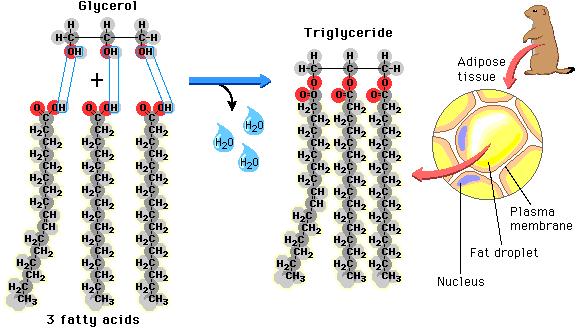 as well as the fat that is found in our food is found in the form of triglycerides. Each triglyceride molecule is made of a “glyceride” (glycerol backbone) and three fatty acids (hence the “tri”) that look like tails. Some of the fat in our adipose cells come from the food we eat, but interestingly, the rest comes from carbohydrates
as well as the fat that is found in our food is found in the form of triglycerides. Each triglyceride molecule is made of a “glyceride” (glycerol backbone) and three fatty acids (hence the “tri”) that look like tails. Some of the fat in our adipose cells come from the food we eat, but interestingly, the rest comes from carbohydrates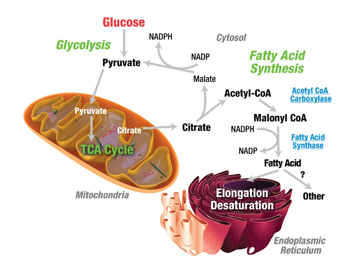
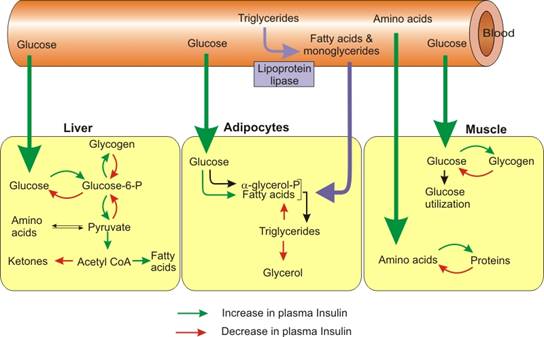 before they can be taken up into the fat cells. The reconstitution of the fatty acids with glycerol is called esterification. Interestingly, the process of lipolysis and esterification is going on continuously, and a ceaseless stream of free fatty acids are flowing in and out of the fat cells. However, the flow of fatty acids in and out of the fat cells depends upon the level of glucose and insulin available. As glucose is burned for fuel (oxidized) in the liver or the fat cell, it produces glycerol phosphate. Glycerol phosphate provides the molecule necessary to bind the glycerol back to the free fatty acids. As carbohydrates are being used as fuel, it stimulates increased triglyceride formation both in the fat cell and in the liver, and the insulin produced by the pancreas stimulates the lipoprotein lipase molecule to increased uptake of the fatty acids into the fat cells (3).
before they can be taken up into the fat cells. The reconstitution of the fatty acids with glycerol is called esterification. Interestingly, the process of lipolysis and esterification is going on continuously, and a ceaseless stream of free fatty acids are flowing in and out of the fat cells. However, the flow of fatty acids in and out of the fat cells depends upon the level of glucose and insulin available. As glucose is burned for fuel (oxidized) in the liver or the fat cell, it produces glycerol phosphate. Glycerol phosphate provides the molecule necessary to bind the glycerol back to the free fatty acids. As carbohydrates are being used as fuel, it stimulates increased triglyceride formation both in the fat cell and in the liver, and the insulin produced by the pancreas stimulates the lipoprotein lipase molecule to increased uptake of the fatty acids into the fat cells (3). After mulling through the last 10 years of caffeine research, most of which were small studies, had mixed results, used coffee as the caffeine delivery system (coffee has over 50 trace minerals that has the potential to skew the results based on the brand) and never seemed to ask the right questions, the ink from a study in the
After mulling through the last 10 years of caffeine research, most of which were small studies, had mixed results, used coffee as the caffeine delivery system (coffee has over 50 trace minerals that has the potential to skew the results based on the brand) and never seemed to ask the right questions, the ink from a study in the 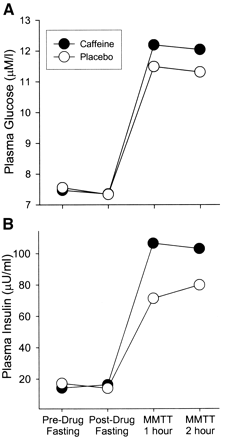
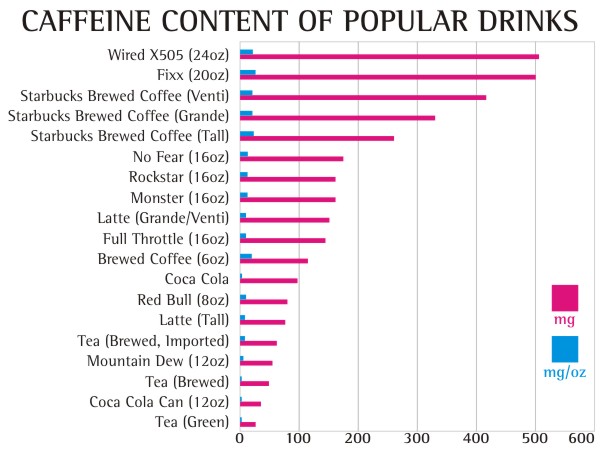






 That something else should be fat. Protein must be moderated, as it will also be stored as fat if you eat too much. So, if the carbohydrates are kept low, fat intake can be increased and the body will pick the fat it wants and essentially throw the rest out without raising cholesterol, causing weight gain or causing heart disease. This is why we want you to use good natural animal fats like butter, hard cheese, olive oil, coconut oil, avocado, etc. Look for fats highest in omega-3 fatty acids as these decrease inflammation and improved weight loss. Look for meats highest in fat like red meat (55% fat) and pork (45% fat). Take the food pyramid and flip it over.
That something else should be fat. Protein must be moderated, as it will also be stored as fat if you eat too much. So, if the carbohydrates are kept low, fat intake can be increased and the body will pick the fat it wants and essentially throw the rest out without raising cholesterol, causing weight gain or causing heart disease. This is why we want you to use good natural animal fats like butter, hard cheese, olive oil, coconut oil, avocado, etc. Look for fats highest in omega-3 fatty acids as these decrease inflammation and improved weight loss. Look for meats highest in fat like red meat (55% fat) and pork (45% fat). Take the food pyramid and flip it over.
 20% of women that I see in my practice who are over 55 years old, need some degree of estrogen replacement before they are able to lose weight. Estrogen plays a very large role in regulation of the metabolism and when deficient, causes weight retention or weight gain. Talk to your doctor about the risks and benefits of estrogen for you individually in this situation.
20% of women that I see in my practice who are over 55 years old, need some degree of estrogen replacement before they are able to lose weight. Estrogen plays a very large role in regulation of the metabolism and when deficient, causes weight retention or weight gain. Talk to your doctor about the risks and benefits of estrogen for you individually in this situation.